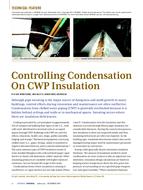Thermal environments, indoor air quality, and the ventilation effectiveness of an underfloor air distribution system were measured and evaluated in an actual office building with comparison of an overhead system in the same building with the same floor plan. The main findings were as follows.
1. The horizontal air temperature distribution in a room (3.6 ft [1.1 m] above floor level) showed a min-max difference of 2.9ºF (1.6ºC) and a standard deviation of 0.7ºF (0.4ºC) in summer for both systems; that is, the two systems were iden-tical in this respect.
2. The evaluation of thermal nonuniformity showed that legs and feet tended to be cooler in the underfloor system, while the head tended to be cooler in the overhead one. However, in both cases, the results suggested that there was probably no discomfort arising from thermal nonuniformity.
3. The underfloor system indicated lower values in both concentration of mass and total number of airborne particles than the overhead system. However, both systems showed low levels of concentration compared to the acceptable value.
4. Measurements of the local ventilation effectiveness and local air change index showed that the ventilation performance of the underfloor system was better than that of the overhead system.
Units: Dual
Citation: ASHRAE Transactions, vol. 108, pt. 1, Atlantic City, 2002
Product Details
- Published:
- 2002
- Number of Pages:
- 13
- File Size:
- 1 file , 900 KB
- Product Code(s):
- D-6946

